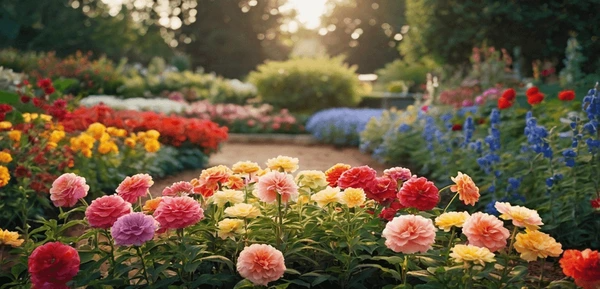Alstroemeria: Properties and Types
Alstroemeria, also known as Peruvian Lily or Lily of the Incas, is celebrated for its vibrant colors, intricate patterns, and long-lasting blooms. These striking flowers have captured the hearts of gardeners and floral enthusiasts alike. In this blog, we’ll explore the properties of alstroemeria and examine the various types that make these flowers so captivating.
The Appeal of Alstroemeria
Alstroemeria is renowned for several key features that make it a popular choice for gardens and floral displays:
- Color Variety:
- Alstroemeria blooms come in a stunning array of colors, including shades of pink, red, orange, yellow, white, and purple. This rich color palette adds vibrancy to any garden or indoor space.
- Patterns and Markings:
- One of the standout features of alstroemeria is its unique petal patterns. Many varieties have intricate stripes, spots, or speckles, adding visual interest and texture to the blooms.
- Long-Lasting Blooms:
- Alstroemeria flowers are known for their longevity. They typically last for several weeks, making them an excellent choice for extending the beauty of gardens and floral displays.
- Symbolism:
- In the language of flowers, alstroemeria symbolizes friendship, mutual support, and devotion. Their delicate appearance and enduring beauty make them a meaningful choice for various occasions.
- Versatility:
- Alstroemeria is versatile and can be grown in different settings, including garden beds, borders, and containers. They adapt well to various climates and conditions.
Types of Alstroemeria
Alstroemeria varieties are diverse, each with its unique characteristics. Here are some popular types:
- Single-Color Alstroemeria:
- Description: Single-color alstroemeria features blooms with uniform color throughout. This type highlights the pure and vibrant hues of the flowers without additional markings.
- Colors: Available in a range of colors including red, pink, orange, and yellow.
- Features: Known for their striking and bold appearance, single-color alstroemeria adds a pop of color to any garden or floral display.
- Bicolor Alstroemeria:
- Description: Bicolor alstroemeria showcases blooms with two contrasting colors. The flowers often have a gradient or distinct color separation.
- Colors: Common combinations include pink and white, red and orange, or purple and yellow.
- Features: The contrasting colors create a dynamic and eye-catching effect, adding depth and visual interest to garden displays.
- Speckled Alstroemeria:
- Description: Speckled alstroemeria features blooms with distinctive spots or speckles. These markings are typically in contrasting colors and add texture to the petals.
- Colors: Often found in colors such as pink, white, and yellow with darker speckles.
- Features: The speckled pattern adds a playful and unique touch to the flowers, making them stand out in any arrangement.
- Striped Alstroemeria:
- Description: Striped alstroemeria has petals with distinctive stripes or lines, often in contrasting colors. The stripes can vary in width and intensity.
- Colors: Commonly seen in combinations like red and white, pink and yellow, or purple and white.
- Features: The striped pattern gives the flowers a structured and elegant look, adding sophistication to garden displays.
- Marbled Alstroemeria:
- Description: Marbled alstroemeria features petals with a marbled or swirled appearance, where colors blend seamlessly into each other.
- Colors: Available in combinations such as peach and cream, lavender and white, or coral and pink.
- Features: The marbled effect adds a smooth and fluid appearance to the flowers, creating a harmonious and artistic look.
- Fringed Alstroemeria:
- Description: Fringed alstroemeria has petals with a fringed or ruffled edge, adding a textured and delicate detail to the blooms.
- Colors: Found in colors like pink, red, and white.
- Features: The fringed edges enhance the visual interest and add a touch of elegance to the flowers.
- Miniature Alstroemeria:
- Description: Miniature alstroemeria features smaller blooms and shorter stems. This compact size makes them suitable for smaller spaces or container gardens.
- Colors: Available in various colors, including pink, yellow, and purple.
- Features: Their petite size and delicate appearance make them ideal for adding charm and subtlety to any garden or indoor display.
- Hybrid Alstroemeria:
- Description: Hybrid alstroemeria results from crossbreeding different varieties to create new and unique blooms. They often combine desirable traits from multiple parent plants.
- Colors: Colors vary widely, depending on the hybrid.
- Features: Hybrids can exhibit a range of characteristics, including unique colors, shapes, and patterns, offering a diverse selection of blooms.
- Wild Alstroemeria:
- Description: Wild alstroemeria is less cultivated and often has a more natural and rugged appearance. They are typically found in their native habitats and show variability in form and color.
- Colors: Varies widely, including shades like orange, yellow, and purple.
- Features: Their natural appearance adds an authentic and rustic touch to garden settings.
- Peruvian Alstroemeria:
- Description: Peruvian alstroemeria, also known as Alstroemeria aurea, features vibrant blooms with rich colors and patterns. It is named after its native region in Peru.
- Colors: Commonly found in bright colors such as yellow, orange, and red.
- Features: Known for its bold and eye-catching appearance, Peruvian alstroemeria adds a vibrant touch to any garden or floral display.
Conclusion
Alstroemeria is a versatile and enchanting flower that offers a range of colors, patterns, and types. Its long-lasting blooms and rich symbolism make it a valuable addition to any garden or indoor space. At Charming Flowers Trading, we provide a diverse selection of alstroemeria varieties to help you create stunning and memorable displays. Embrace the beauty and diversity of alstroemeria and let it bring elegance and vibrancy to your environment.

